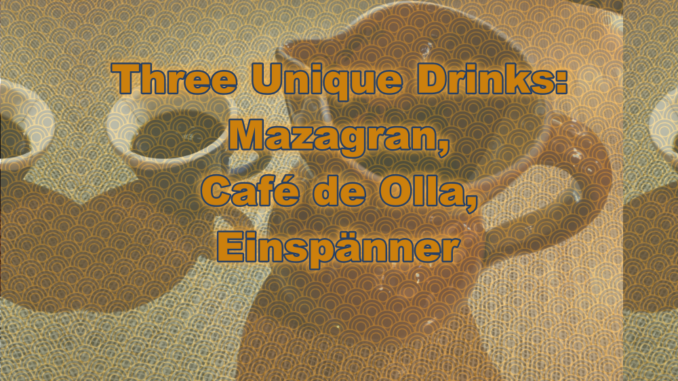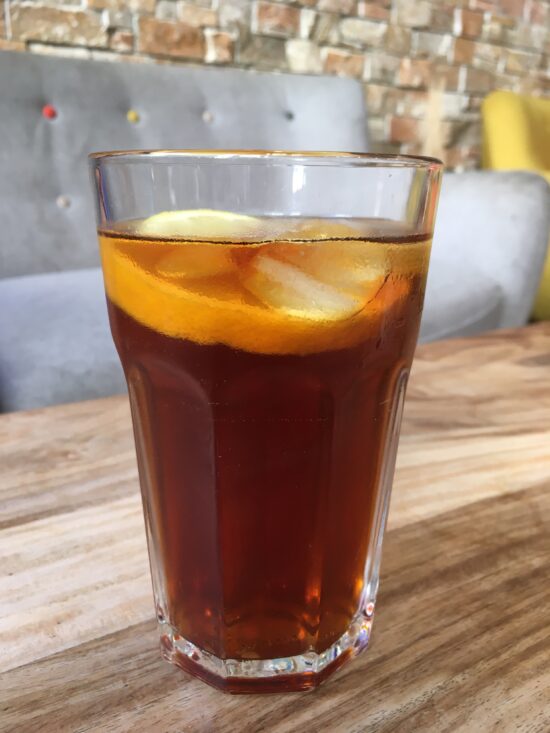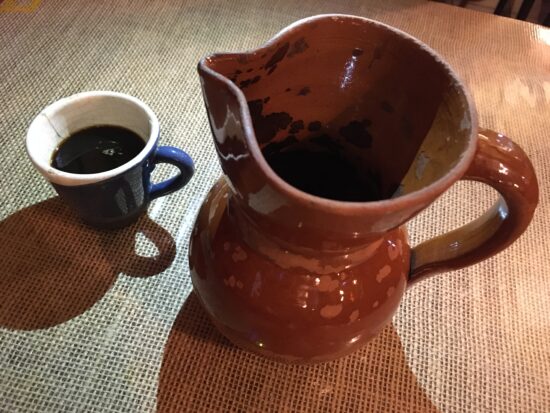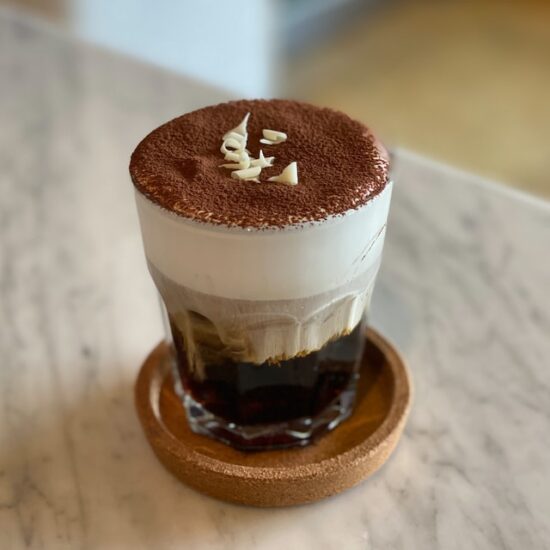
Beyond the traditional café menu items in Portugal, Mexico, and Austria, you can often find these three traditional drinks on offer. We take a look at the history behind each one.
BY TANYA NANETTI
SENIOR ONLINE CONTRIBUTOR
Photos by Tanya Nanetti unless otherwise noted
We are all familiar with the basic coffee order and terms like espresso, cappuccino, and latte. When you visit a coffee shop in Portugal, Mexico, or Austria, in addition to the classics, you may find local specialties on the menu that you’ve never heard of like the Mazagran, Café de Olla, and Einspänner. These unique drinks are worth tasting if you get a chance; read on for their histories and recipes.

Mazagran, Portugal
Long before the recent trend of mixing coffee with citrus fruit, there was Mazagran, one of the first iced coffees ever invented. The true story behind its origin is lost to time, but there remains a fascinating legend.
During the French invasion of Algeria in the 1830s, a small outnumbered French regiment was captured by the Algerians, who held them prisoner in a besieged fortress in Mazagran, a small town along the Algerian coast.
While imprisoned in the outpost, resources were scarce and there seemed to be no effective way to combat the heat; cutting coffee with brandy as usual was impossible. The soldiers found an alternative: mixing coffee with cold water and lemon juice for refreshment. Thus, the Mazagran was born.
After the Treaty of Tafna was signed in 1837, the French soldiers returned home, bringing the Mazagran iced coffee with them. For almost a century it was customary to drink it in all the trendy Parisian cafés.
Eventually Mazagran almost disappeared from the French cafés and, surprisingly, began to appear in Portuguese pastelerias (pastry shops) and cafés, with a recipe reminiscent of the original.
Mazagran Recipe
To make your own Mazagran, fill a glass with ice, and top it with your favorite black coffee (long espresso or filter coffee will do, usually with added sugar). Add the juice of a freshly squeezed lemon, then garnish with a lemon slice. If it’s late in the day, add a splash of rum!

Café de Olla, Mexico
At the beginning of the 20th century, during the Mexican Revolution, many women helped the fight at the front. Called Adelitas (from Adela Velarde Pérez, a nurse from Ciudad Juarez who treated injured soldiers), they had a hard and fundamental job during the war: They carried soldiers’ bags, took care of camps, and above all organized the food supply.
To help the soldiers fight for long and strenuous hours, the Adelitas created a recipe including coffee, sugar, and spices, all blended together in a giant clay pot (the olla, which gave the coffee its name). The drink gave soldiers the necessary energy boost, with an added healing touch, thanks to the blend of spices and aromatic herbs.
Café de Olla is easy to find nowadays all over Mexico, from small roadside eateries to local diners and cafés, and it is also often prepared by Mexican families at home, during Christmas celebrations, and in wintertime.
Café de Olla Recipe
The contemporary recipe is usually prepared by mixing in a small saucepan 4 cups of water, half a cinnamon stick, and 3 oz. of dark brown sugar (many suggest using piloncillo, a dark sugar whose taste is reminiscent of molasses).
Over low heat, simmer until the sugar is dissolved, add 4 tablespoons of ground coffee, turn off the heat, and stir. At this point, cover the pot and let it steep for at least 5 minutes, strain, and serve.

Einspänner, Austria
Totally different is the origin of the Einspänner, a scrumptious coffee drink made in Vienna, Austria: Its name comes from the traditional figure of the coachman of a single horse-drawn carriage.
Historically, these Einspänner were like modern taxis, and stayed in the cold Viennese alleys waiting for customers who needed a ride. Austrian winter nights are long and cold, and the coachmen needed something to keep warm. This is how, according to legend, the Einspänner was born: a long hot coffee topped with a thick layer of whipped cream (which would insulate the coffee to keep it warm), served in a handled glass so that the coachmen could hold it easily without risk of spilling, while simultaneously able to hold the reins with the other hand.
The cold whipped cream on top of the Einspänner had a second, clever function: If suddenly a customer came, the coachman could quickly consume the drink by slurping the hot coffee through the cold cream on the top.
Einspänner Recipe
To replicate the Einspänner at home, brew a hot strong coffee (a double espresso or a short concentrate filter will do) in a glass and top it with whipped cream.
To help create the layer of cream on top of the coffee, gently let the cream slide onto the back of a teaspoon held just over the espresso, like you would for an Irish Coffee. For extra sweetness, garnish it with a little cocoa powder and drink without stirring to enjoy the contrast: cold and sweet cream versus hot and bitter coffee. A total delight.
ABOUT THE AUTHOR
Tanya Nanetti (she/her) is a specialty-coffee barista, a traveler, and a dreamer. When she’s not behind the coffee machine (or visiting some hidden corner of the world), she’s busy writing for Coffee Insurrection, a website about specialty coffee that she’s creating along with her boyfriend.



